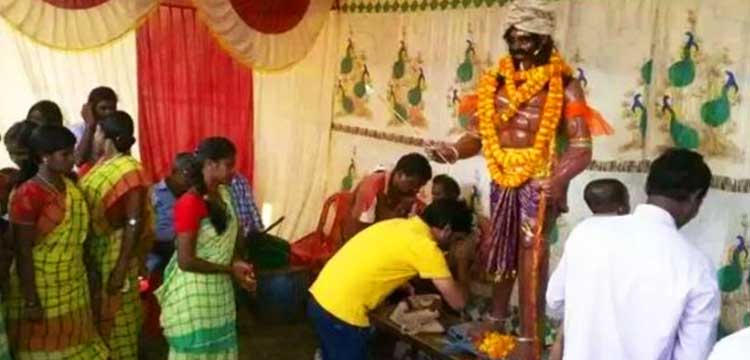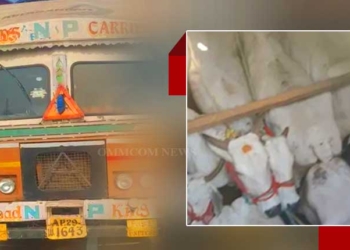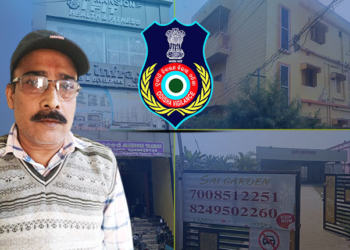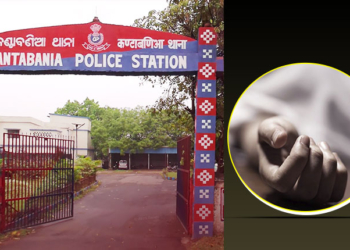Ranchi: Originally, Durga Puja, which is now known as Basanti Puja, was celebrated during spring. The Durga Puja celebrated during autumn or in the Hindu calendar month of Ashwin is called ‘Akal-Bodhan’ owing to its unusual timing. Going by the Ramayana, the autumnal Durga Puja was first performed by Lord Rama in Rameshwaram to appease Goddess ‘Shakti’ to get her blessing in fighting and defeating Ravana. Ironically, Ram was a Kshatriya and unable to perform the Brahmancal duties during the puja. Rama had to request Ravana, a Brahman and a devotee of Goddess Durga, to be the priest in his Durga Puja to defeat him.

Interestingly, there are a number of versions of the Durga Puja celebrated across India, especially the eastern part of the country. One such version says that the Durga Pujas, both during the spring and autumn, were originally harvesting festival – celebrating the spring and the autumnal equinoxes.
Another version of Durga Puja talks about the tribal lineage of Maa Durga. Many scholars are of the view that the term Dussera has its roots in the non-Aryan tribes. It is believed that Dussera originated from two words of Dus (ten) and Eras (Goddesses). Philologically, Era is the Austric Santali term for Goddess. In plain English, Dusshera would denote worshipping Ten Eras or Ten Goddesses.
Here we will discuss how some tribes in Jharkhand celebrate Durga Puja.
The Santals
The Santhals are a non-Hindu and non-Aryan community and have their own religious faiths as well as their own Gods and Goddesses. Santhals in Jharkhand follow the Sarna religion and worship the nature. While the Hindus celebrate Durga Puja during the autumn, the Santhals observe the Dasain.
Unlike the Durga Puja, which is conducted over five days from Mahashasthi to Dusshera, Dasain is a four-day long celebration. It commences on the Mahasaptami or the 7th lunar day of the Autumn Durga Puja. However, like the Hindus who worship Goddess Shakti during Durga Puja, the Santals worship their Goddess Jaher in their sacred grove known as Jaher Than for power and strength.
There is a myth behind Dasain and it goes like this. In ancient times, two Santhal lovers Durga and Devi used to meet in the woods, and once the Aryans kidnapped the happy couple. When the news of Durga and Devi’s abduction reached their villages, the tribals launched a door-to-door search for the couple by beating their traditional drums. However, neither Durga nor Devi could be found anywhere.
According to a myth, during their search, the tribals reached the seashore but still could not trace Durga or Devi. As it was raining heavily, the search party was unable to cross the sea and continue its search. Since then, the Santals believe that Durga and Devi are still alive and they would be found someday. For this reason, the custom of Dasainkodaku wherein the Santhals dance and visit every home with the hope of finding Durga and Devi.
The Asurs
The Asurs are a small tribal community who call themselves Mundari. These people of the Mundari tribe are said to be the first iron-smelting community in India. And if you believe some experts, one of their famous works includes the Mehrauli iron pillar in Delhi.
Members of the Asur community are found across north India, especially in Gumla, Latehar,Khunti, Lohardagga, and Hazaribagh districts of Jharkhand. Some of them have also settled in West Bengal.
The Asurs believe that they are the descendants of the legendary Mahishasur – the mythological demon who was slain by the Aryan Goddess Durga.
Consequently, the Asurs lock themselves in their homes, blocking every point from where light can enter into their homes during the Aryan’s Navratri festival. They come out in the evening to mourn the slaying of their king Mahishasur. The mourn the death of Mahishasur as they believe that the Aryan Gods and Goddesses tricked and killed their king and prominent Asurs.
Notwithstanding all these, in present times, many among the Santhals and Asurs are adopting the Hindu way of life and celebrating the Durga Puja like others in the region.















